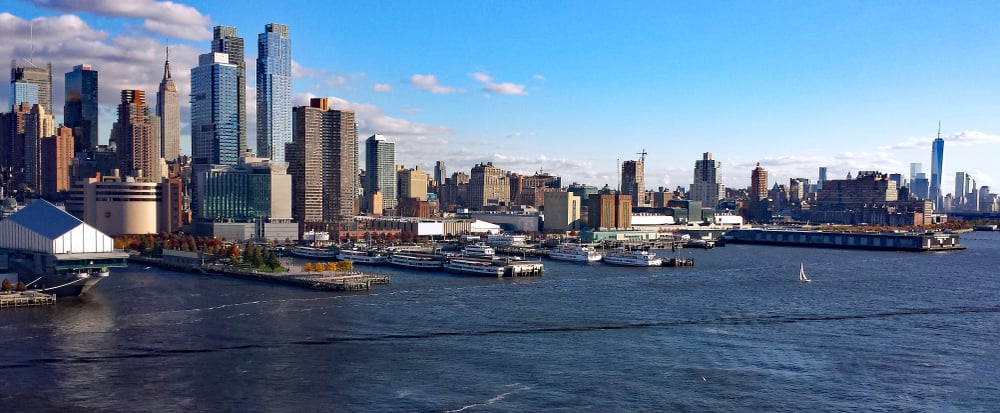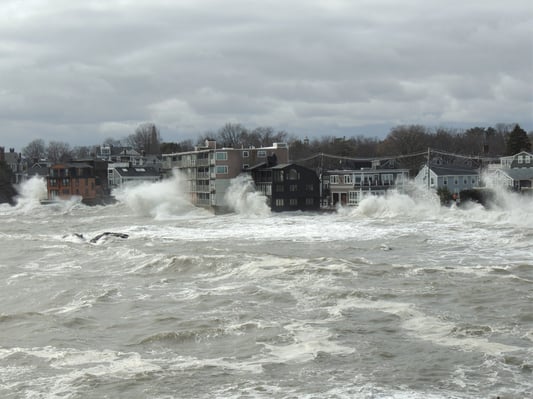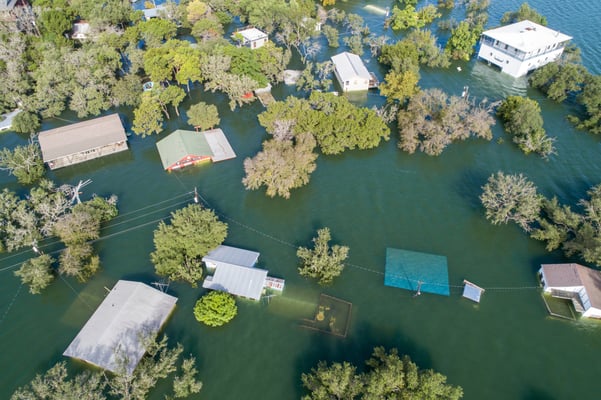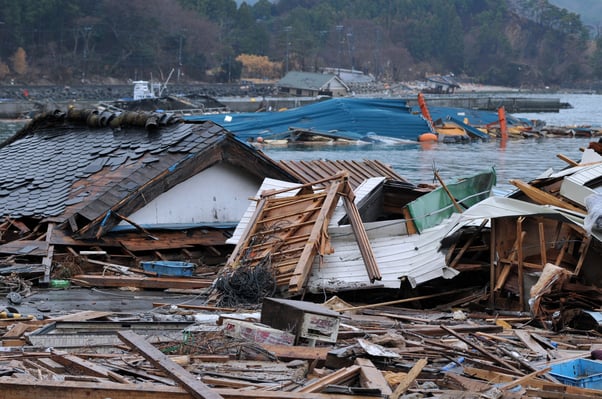Impact of Climate Change in Coastal Areas, Part 2

Coastal regions around the world are home to several industries, which create many jobs. They also host diverse ecosystems, while attracting tourists. However, coastal regions are exposed to many climate-related hazards - sea level rise, coastal erosion, high tide flooding, storm surge, inland flooding, and tsunamis. The first three coastal hazards were already covered in the previous article, and now we will discuss the rest.
Storm Surge
When hurricanes and other severe storms move toward the land from the ocean, low pressure, and strong winds can push considerable water volumes onto the coast. Storm surges can produce water levels much greater than a normal high tide, which results in extreme coastal and inland flooding.

The most critical conditions occur when a storm surge arrives at the same time as a high tide. Hurricane Sandy in 2012 was an example of this, when water level rose over 20 feet above mean sea level. The local vulnerability to storm surges will depend partly on the shape of the ocean floor in that specific region. The National Hurricane Center provides many resources, including a series of maps for people in hurricane-prone areas, which illustrate storm surge risk.
Water can cause severe damage to structures and buildings, considering that it weighs around 1,700 pounds per cubic yard. Therefore, when structures are exposed to large waves, they may not withstand the resulting forces. Additional impacts of storm surges include:
- Beach erosion
- Property loss
- Damage to coastal habitats
- Undermining the foundations of infrastructure
- Casualties by drowning
Get a resilient design for your next building project.
Inland Flooding

Inland flooding results from coastal storms that make landfall. By definition, it does not occur on the coast, but hazard specialists still group it with coastal issues. The annual damage cost of inland floods is higher than any other severe weather event, and they can have several causes:
- After rain falls for many consecutive days
- Following brief periods of intense precipitation
- Snowpacks melting quickly
- Dam failure
Basically, inland flooding occurs whenever the volume of water on land overcomes the capacity of natural and built drainage systems. After storms cause damage along the coast, they can still produce widespread rainfall and floods as they travel inland, as it occurred with Hurricane Harvey in 2017. As the global average temperature increases, sea level rise will increase the frequency and extent of extreme flooding associated with coastal storms, even if the intensity of the storms remains the same.
Consecutive coastal storms also increase the risk of inland flooding. For example, if an area is struck by two consecutive tropical storms, soils may be saturated with water and rivers may be close to overflowing. In many coastal areas, the harshness of combined events has increased; for example, having a storm surge, river overflow, and heavy precipitation simultaneously.
Tsunami

A tsunami is a series of large ocean waves caused by a sudden movement of the ocean floor, landslide, or volcanic activity. Tsunamis have great destructive potential, posing one of the most serious threats to coastal areas and communities.
As tsunami waves approach the shore, they start to slow down and gain height. The magnitude of the wave will depend on the depth of the water and the slope of the coast. A tsunami seen from the shore might look like a wall of water moving at 20-30 mph, measuring 10 feet or more. Large tsunamis are rare, but; they have a great destructive potential for coastal communities in their path. Unfortunately, there is no way to prevent a tsunami and there is no “season” - they can strike at any moment during the day or night, during good or bad weather. They can also occur in any ocean or sea, but in most cases, they occur in the Pacific Ocean. However, even though they cannot be prevented, their impact on coastal communities can be mitigated:
- Adequate planning
- Timely warnings
- Preparedness and awareness strategies
- Effective and rapid response
Present-day tsunamis occur above the 8-inch rise in average global sea level since 1900. By the year 2100, tsunamis will occur on top of another 8 inches of sea-level rise, or up to 6.6 feet more under the most pessimistic scenarios.
With the severity and frequency of extreme weather events, building resilience has gained importance in the construction sector. When resilient design is applied in a building, it becomes a more reliable shelter for emergency conditions.

Michael Tobias
Michael Tobias, the Founding Principal of NY Engineers, currently leads a team of 50+ MEP/FP engineers and has led over 1,000 projects in the US
Join 15,000+ Fellow Architects and Contractors
Get expert engineering tips straight to your inbox. Subscribe to the NY Engineers Blog below.



